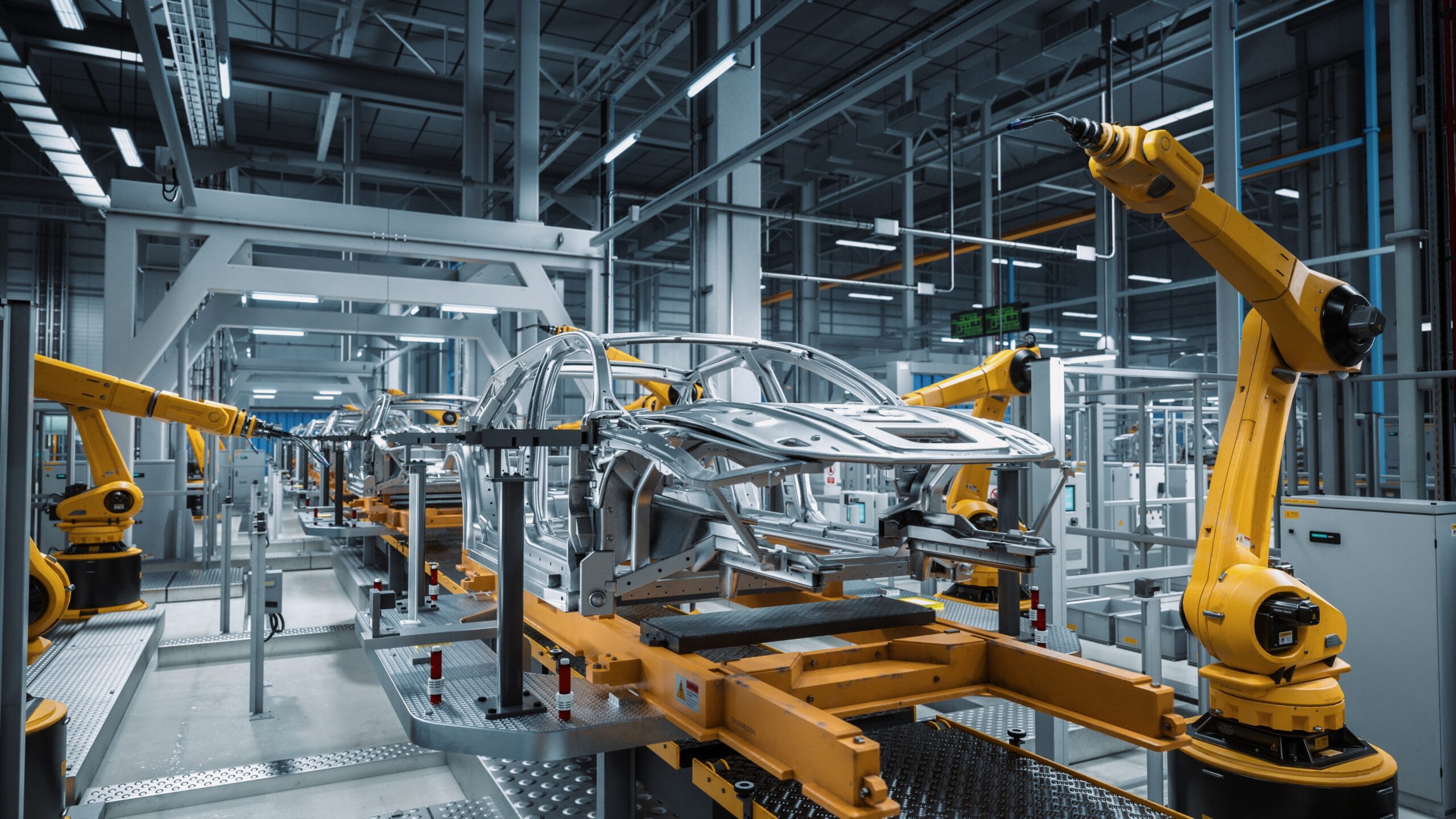For real-time news on business, politics and economic development in the South, go to SouthernBusiness.com. For all projects announced in the South and more, go to SB-D.com. For more information on the automotive industry, go to SouthernAutoCorridor.com.
Alabama
“Working for Alabama” package aims to supercharge the state’s economic growth
In the spring quarter, Governor Kay Ivey signed the “Working for Alabama” legislative package into law, with the goal of transforming Alabama’s workforce, getting more Alabamians trained for high-paying jobs, streamlining Alabama’s economic development efforts and investing into Alabama communities, especially those in rural areas.
The bipartisan, six-bill package aims to streamline and make more efficient and effective the state’s efforts and strategies in these respective areas.
“Our state leaders over the past few years have taken up several ambitious challenges to address Alabama’s top areas of need,” Governor Ivey said. “And the results are paying out in dividends.
“From broadband to infrastructure to The Game Plan we passed last year and now, Working for Alabama, we have come together to put Alabama first and have paved the way for a stronger economy and a better quality of life for all Alabamians,” she said.
Korean parts maker expanding in Opelika, Ala.
Auto parts maker Daewon is planning a $46.2 million expansion in Opelika, Ala. that will create 100 jobs.
Arkansas
EV battery-quality lithium plant in Arkansas gets boost
Standard Lithium Ltd., the company developing commercial lithium operations in Arkansas and east Texas, announced Wednesday that it has a new partnership with publicly traded Equinor ASA. Norway-based Equinor is investing up to $160 million in the new plants.
Standard, based in Vancouver, British Columbia, will get a $30 million cash payment at closing of the deal. Additionally, Equinor will solely provide funds for a $60 million work project in southwest Arkansas and in east Texas. Standard has been producing battery-quality lithium products at a test plant in El Dorado for more than three years.
Hino Motors closing large plant in Arkansas Delta
A couple of decades ago, Toyota and its site selection guru, Dennis Cuneo, scouted a megasite across the bridge from Memphis in Marion, Ark. to build a large assembly plant. That was the pickup truck project that ended up on San Antonio.
While East Arkansas lost out on that deal, they gave the Delta a “parting gift,” according to workforce development pro, Dr. Glen Fenter. Fenter is now superintendent at Marion Schools.
The parting gift was Hino, which makes stamping and component parts in Marion. In June, the Japanese-based parts manufacturer announced it will close the 1,300-employee facility in late 2027. HMM is a subsidiary of Japanese publicly traded company Hino Motors Ltd., of which Toyota owns a majority stake. HMM began production at its Marion facility in 2006 and expanded multiple times over the years.
EV startup scratches Arkansas from its site list
Electric vehicle manufacturer Canoo Technologies announced in November 2021 that it was moving its corporate headquarters from Texas to Bentonville, Ark. and planning a research and technology center in Fayetteville. That is unlikely to happen now as the warehouse in Bentonville where Canoo was to being EV assembly is now up for sublease, only after a couple of years of the company signing a 10-year lease. But Canoo never moved in because it could not secure, according to the company, a second site in the area to house its headquarters.
Rural Arkansas county on a major five-year run
Zekelman Industries, the largest independent steel pipe and tube manufacturer in North America, will invest up to $120 million to expand the manufacturing capabilities and product offerings of its subsidiary, Atlas Tube, in Mississippi County, Ark. The project will bring Zekelman’s total number of employees in the area to more than 300. During the unveiling, the manufacturer also announced it will partner with Arkansas Northeastern College on a new workforce training initiative. Mississippi County is the largest steelmaking county in the U.S. with plants like Big River Steel, Nucor and U.S. Steel.
Louisiana
EV battery material maker buy land in Ascension Parish, La.
Element 25, an Australian mining company, has purchased a 35-acre site in Ascension Parish where it hopes to invest $289 million in a plant to make electric battery components. The plant would be the first in the Western Hemisphere to manufacture high-purity manganese sulphate monohydrate, or HPMSM, a critical component in electric vehicle batteries.
Mississippi
Electric truck tri-venture in Mississippi snags BlueOval City CEO
BlueOval City, a Ford-driven project north of Memphis is nearing completion. Ford will manufacture its next-generation electric truck at BlueOval City, which is scheduled for completion this year.
Kel Kearns, formerly the plant manager at the Tennessee Electric Vehicle Center at BlueOval City, will serve as CEO of Amplify Cell Technologies, the name for the tri-venture between Cummins, Daimler Truck, and Paccar. The nearly $2 billion facility will produce differentiated lithium-iron-phosphate (LFP) battery cells in Marshall County, Miss. The North Mississippi plant is projected to house 2,000 workers.
North Carolina
Governor calls North Carolina the “epicenter of clean energy”
In the spring quarter, North Carolina Gov. Roy Cooper said that the Tar Heel State is the center of clean energy. From the Triad Business Journal, “If you talk to any CEO of any car company in the world, they will tell you that they are stumbling all over themselves to get into the market first for affordable vehicles,” says Governor Roy Cooper, who calls North Carolina “the epicenter of clean energy.”
Toyota is building its $13.9 billion battery manufacturing plant in Randolph County, N.C. (near Greensboro). Also, Vietnam EV maker VinFast has started constructing the first electric vehicle manufacturing facility in the Triangle Region in Chatham County. That project is fueled in part by a $1.2 billion economic development initiative, largest in the state’s history. Toyota’s project will create more than 5,000 jobs upon completion in 2025.
The story also contained a quote from the president of Toyota Battery Manufacturing:
“The thing that we were really, really interested in, and we felt like we can capitalize on, was the human capital in the people, the talent pool that they had here, mainly driven a lot by their school systems, their college systems,” says Sean Suggs, North Carolina president of Toyota Battery Manufacturing.
South Carolina
Small EV maker to create jobs in South Carolina
Columbia Vehicle Group (Columbia), an electric vehicle manufacturer, announced it selects Aiken County for the company’s first South Carolina operation. The company’s $12.2 million investment will create 180 new jobs.
Part of the Nordic Group of Companies, Columbia manufactures pure electric vehicles for industrial and commercial markets under the Columbia and Tomberlin brands. The company’s products, which include golf carts, utility vehicles, maintenance vehicles and e-bikes, are distributed globally.
Columbia is relocating manufacturing operations from Florida and Wisconsin to Aiken County for closer proximity to customers and its supply chain. The company will purchase and upfit the existing 154,480-square-foot facility located at 2063 University Parkway in Aiken.
South Carolina earned top inbound state for moves; top five include four from the South
The 2023 Allied US Migration Report presents a detailed analysis of the current trends in interstate moves across the United States, highlighting significant patterns and underlying economic factors.
According to Allied, South Carolina tops the list of states for relocation in 2023, according to the study. According to the Allied US Migration Report, the most attractive state for people to move to in 2023 was South Carolina (65%). And Charleston was the top city (70%). The percentage represents the number of people moving into the state as a share of the state’s total number of movers.
The top five inbound states included Arizona, Tennessee, North Carolina and Florida in the Allied ranking. Other data from the report included:
Top Outbound States
Illinois
California
Pennsylvania
Michigan
Washington
Top Inbound Cities
Charleston, S.C.
Tucson, Ariz.
Charlotte, N.C.
Nashville, Tenn.
Phoenix, Ariz.
Top Outbound Cities
San Diego, Calif.
Chicago, Ill.
Seattle, Wash.
Detroit, Mich.
Los Angeles, Calif.
Source: Allied US Migration Report
Nucor Steel breaks ground on $425 million expansion in South Carolina
Nucor Steel Berkeley broke ground on the construction of a new galvanizing line in May. The $425 million investment will create more than 50 new full-time jobs, according to a news release. The new galvanizing line is expected to start up in mid-2025. Adding a new galvanizing line at the South Carolina sheet steel mill supports Nucor’s strategy to expand the company’s capabilities and grow its participation in the automotive and consumer durables markets, the release stated. The mill in Berkeley County produces flat-rolled steel which has hundreds of everyday uses, including parts for cars, water heaters, lawnmowers, appliances and more. Nucor Steel Berkeley also produces steel beams that are used as support structures in bridges and buildings.
German industrial giant Siemens partnering on battery manufacturing ecosystem in South Carolina
Siemens is partnering with Kontrolmatik, a power systems integrator, to create a sustainable battery ecosystem in The Palmetto State. The collaboration is centered on a sustainable battery ecosystem to transition to a decarbonized energy system as it ramps up energy storage operations in the state and in North America.
Tennessee
BlueOval City coming to life in West Tennessee
Ford Motor Co. made a major announcement in the spring regarding its BlueOval City plant north of Memphis. Stamping, of workforce and environmental initiatives and confirmed that mass hiring for BlueOval City is scheduled to start next year.
Robotic training cells, conveyors, paint spray booths, and stamping press lines have been installed at what is called the Tennessee Electric Vehicle Center (TEVC) in rural Stanton, Tenn.
Hiring for hourly workers is set to begin in 2025, with Ford unleashing its BlueOval Learning workforce development plan to build up a local workforce in the meantime. Vehicles are expected to be delivered in 2026 from the massive plant.
UAW successfully organizes union at VW plant in Chattanooga
UAW wins at VW plant Tennessee, no chance for union at Mercedes plants in Alabama
In April, workers at a Volkswagen plant in Tennessee voted to join the union, the first large nonunion auto plant in the South to do so. Weeks later, the union negotiated a new contract bringing significant pay and benefit improvements for its members at several North Carolina factories owned by Daimler Truck.
Virginia
Global clean energy manufacturer Topsoe to invest $400 million in Virginia
Topsoe, a Danish manufacturer and global leader in carbon emission reduction technologies, plans to invest more than $400 million to build a factory at Meadowville Technology Park in Chesterfield County. Pending Final Investment Decision, the company will manufacture advanced, energy-efficient Solid Oxide Electrolyzer Cells (SOEC) that are essential in the production of clean hydrogen at the facility. Federal tax credits from the U.S. Department of Energy under the Qualifying Advanced Energy Project Credit (Section 48C) will support the construction of the facility, which would be Topsoe’s largest U.S. investment. The project is expected to create 150 new jobs.










